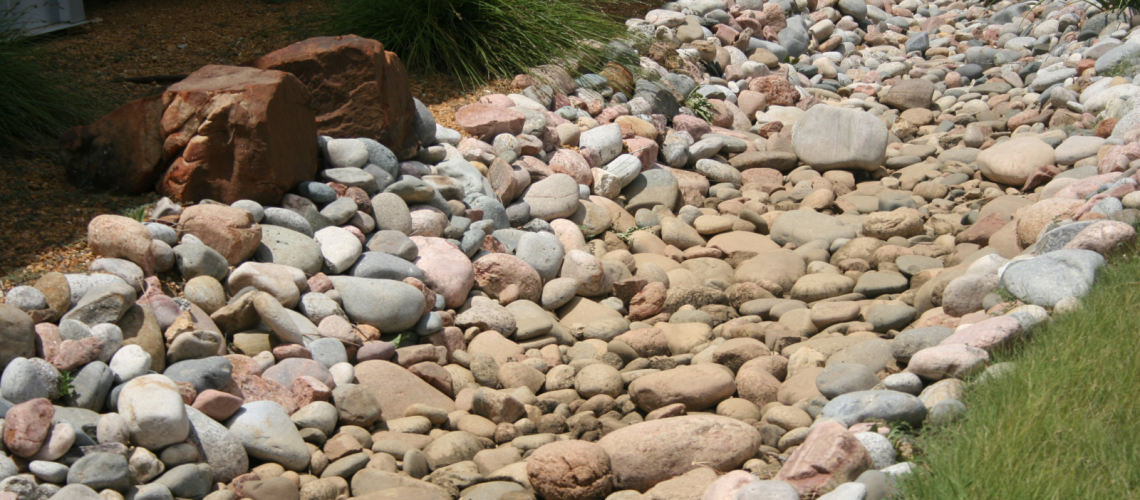Having drainage or flooding issues with your yard? Looking to incorporate some functional but eye-catching features in your yard? Try rainscaping with bioswales and dry creek beds! Rainscaping involves using vegetation or other permeable surfaces to help clean, hold, and slow stormwater runoff. Not only does it add a unique look to your landscape, it is also mitigates flooding and protects our rivers.
What is a Bioswale?
A bioswale is a channel designed to move stormwater runoff using in-ground pipes and planted vegetation. When it rains, water will go down into the vegetation where it infiltrates into the ground then is conveyed into pipes.
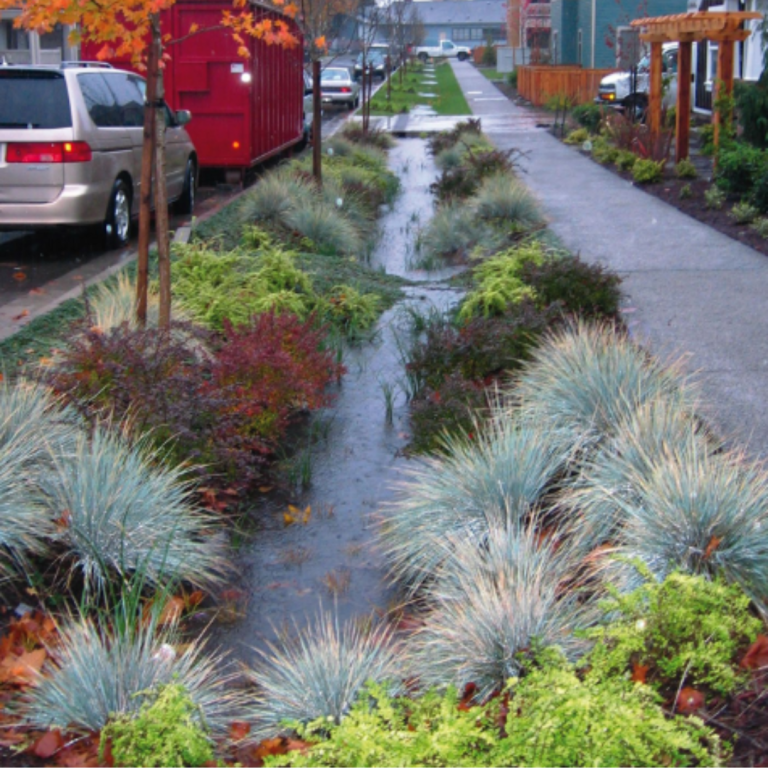
What is a Dry Creek Bed?

A dry creek bed is a channel made to convey stormwater runoff using rocks and in-ground pipes. Rainwater will infiltrate through the rocks and into the ground. It is a great option for those who need to move water through larger areas.
Why Rainscape?
Since bioswales and dry creek beds help slow water down, they reduce flooding and resulting erosion. The plants and microbes in the soil and on the rocks also filter out chemicals and pollutants, keeping them out of local waterways.
They also encourage water infiltration into the soil, keeping the water that falls on your landscape in your soil and recharging groundwater.
The vegetation, water, and rock crevasses also provide essential habitat for wildlife!
Another great benefit is that the water can be collected to use for irrigation by directing it into a catchment area, such as a retention pond.


How To Create Your Own Rainscapes
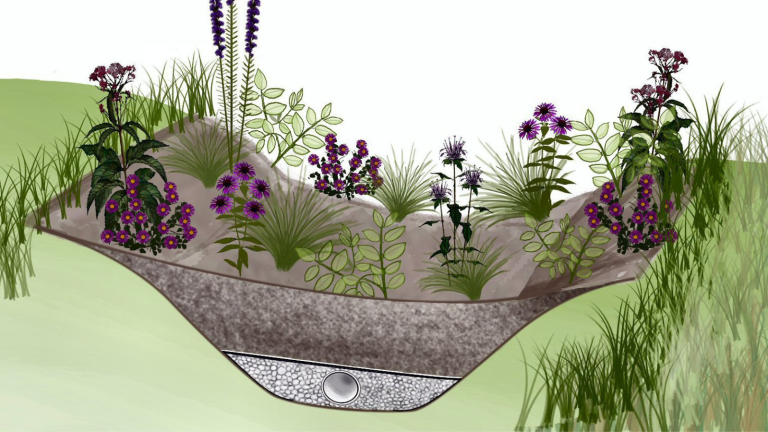
Creating the Base
Dig out a space for the drainage channel
Install pipes and drains – Drains can be installed and connected to pipes, or pipes with holes in them can be used without drains.
Fill in the around the pipe – use sand or gravel for good drainage around the pipes and drains. This will be the bottom layer.
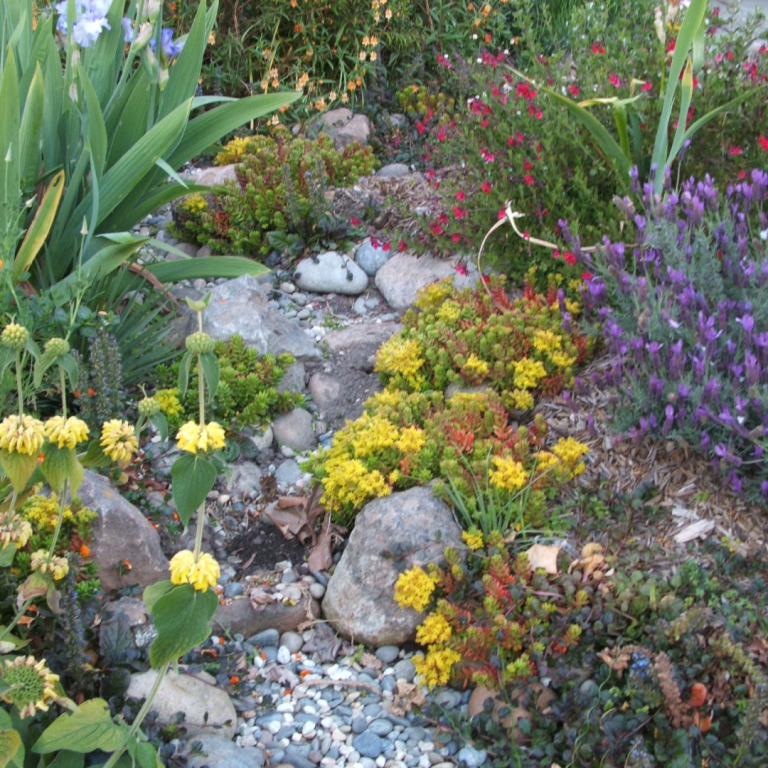
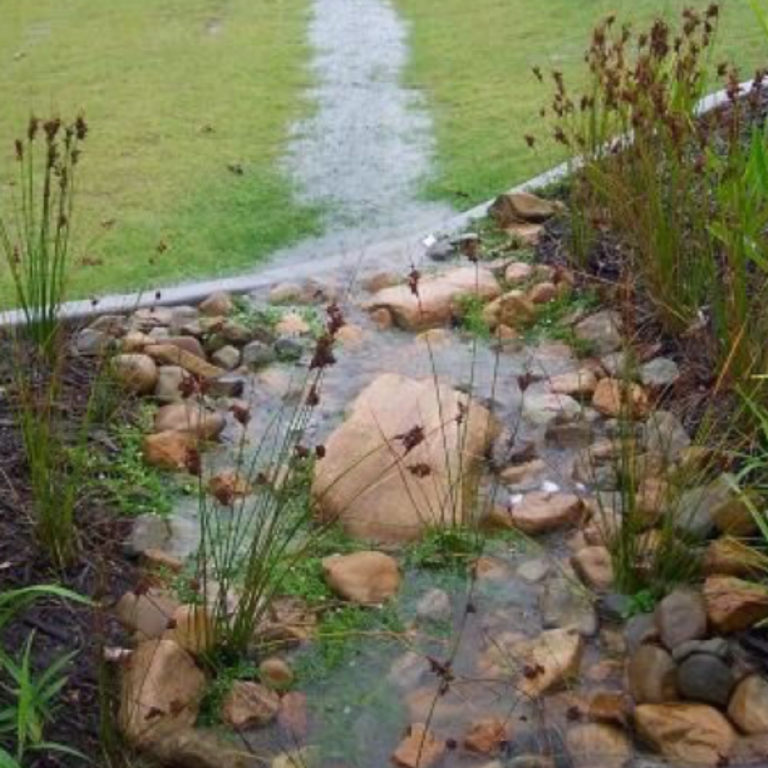
Placement
The perfect place to have a bioswale or dry creek bed is where water naturally gathers and flows. This can be under a downspout, at the bottom of slopes, or at depressions. Water from a downspout can be redirected to a desired location. Another great place to add rainscaping is at the edge of sloped yards, to stop water from flowing onto the street.
For a Dry Creek Bed
If you are wanting a dry creek bed, now is the time to place your rock layer. Place larger rocks around the edges, under downspouts, or where the water will be flowing the fastest. Place smaller rocks in the center of the bed. Plants can be laced along the sides for a nice look.
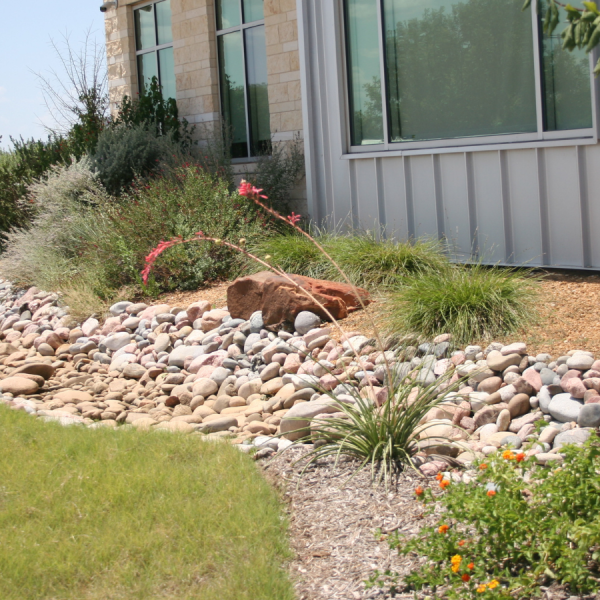
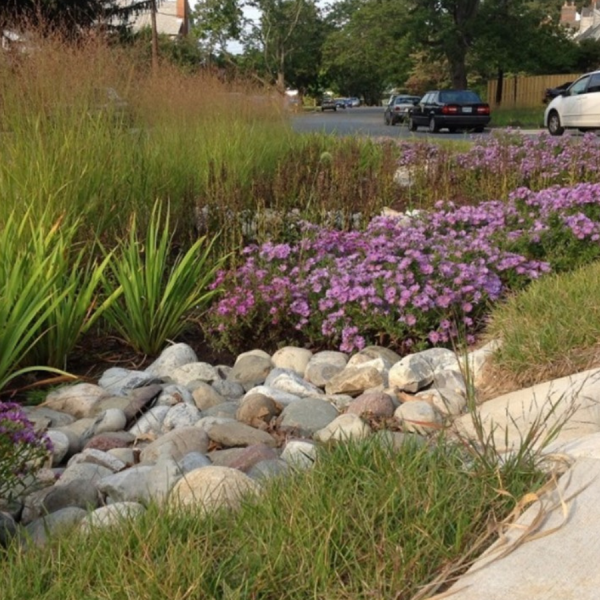
For a Bioswale
If you are wanting a bioswale, you will place a layer of compost amended soil about 1-2 feet thick to plant into.
Next, plant native plants that slow and filter water.
After planting, place a 2-3 inch layer of mulch to control erosion and reduce evaporation.
Important Tip: All the water should soak in after 24-48 hours. If your bioswale is holding water for longer than 72 hours, you may need more drainage substrate at the bottom, larger drainage holes, or more drains.
Bioswale Plant Choice
Bioswales will be very wet sometimes but will likely stay at typical soil moisture between rain events. Many bioswales are not irrigated, so for North Texas it is smart to choose plants that are also happy to be dry during our hot summers. For this reason, the best bioswale plants are native plants that are ok with wet feet but are happy to be dry, like those that naturally grow near streams and in floodplains.
First, find native plants based on the amount of sunlight the area gets. Choose the plants that have medium water needs and are okay with being wet or dry. Take a look at the suggestions below or easily search by sun and water needs at http://www.txsmartscape.com. Texas A&M also has a great list of plants for rainscapes.
Place more water-loving plants in the middle, where the lowest depression is, and plants that like it drier near the edges. Plant more thick, fibrous plants like large grasses or bushes in the middle, and plant smaller flowers and ferns around the edges. Another great choice for a low maintenance bioswale is to seed it all with wildflowers.
Bioswale Plant Suggestions
Grasses
Bushy Bluestem – Andropogon glomeratus
Eastern Gamagrass – Tripsacum dactyloides (pictured)
Inland Seaoats – Chasmanthium latifolium
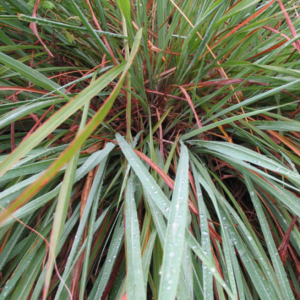

Shrubs
Buttonbush – Cephalanthus occidentalis (pictured)
Beautyberry – Callicarpa americana
Flame Acanthus – Anisacanthus quadrifidus
Flowers
Gregg’s Mistflower – Conoclinium greggii (pictured)
Giant Coneflower – Rudbeckia maxima
Ironweed – Vernonia baldwinii
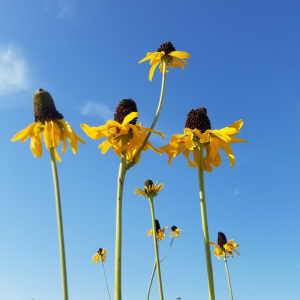
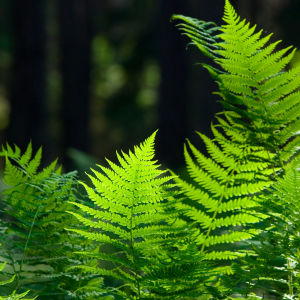
Groundcover
Native Wood Fern – Thelypteris kunthii (pictured)
Frog Fruit – Phyla nodiflora
Horseherb – Calyptocarpus vialis
Now you are ready to make your own bioswale or dry creek bed!
Learn more about TRWDs rainscapes here: TRWD Rainscapes (arcgis.com)

